-
Your shopping cart is empty!
The process of making a surfboard is the same all over the world, but the quality of the products and workmanship used throughout the manufacturing process can differ immensely. The key to making a high quality, high performance surfboard is in the skill and care taken to make it. A CNC machine is used to initially rough out the blank but the rest is truly a hands on specialised process.
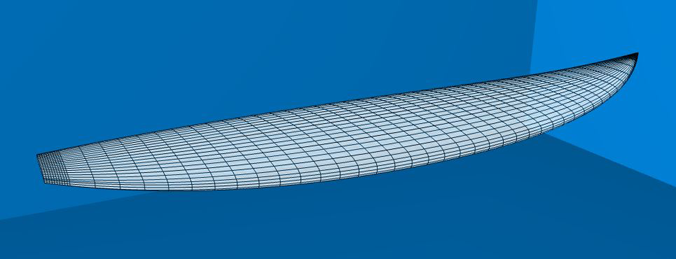
The first important step in manufacturing a custom surfboard is designing a board that suits you. We have spent a lot of time creating a range of boards for both a variety of surf conditions and surfer's abilities. Using the a shapers knowledge along with the AKU Surfboard Design Software allows us to make small yet significant changes as we progress with the boards shape and performance. You can custom order any of our current range of boards or alternatively you can visit Steve and together design a full custom surfboard. All our custom orders are saved under the customer’s name for safe keeping, so if requested a very close replica can be made or we can make subtle changes to your future shapes to develop your own dream stick and help you get the most out of your surfing.
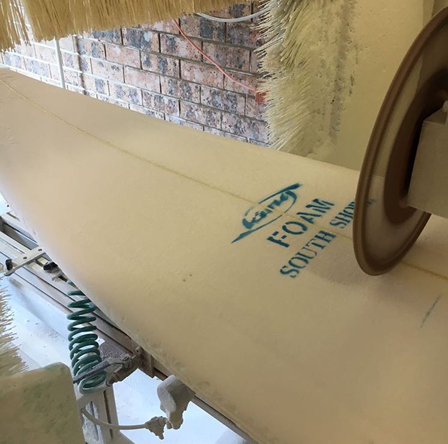
The foam under your feet is the heart and soul of our surfboards. It is the 1st key element needed to make a light weight, high performance board. The blank must provide strength, consistent density, buoyancy and excellent shaping properties. There are only a few Australian companies who provide this quality of blank and we've stuck with the best - South Shore Foam. They have been making blanks for over 50 years and sell them to Australia's top surfboard manufacturers. We use Polyurethane (PU) blanks, the original and still the most popular choice for pro surfers and shapers all over the world.
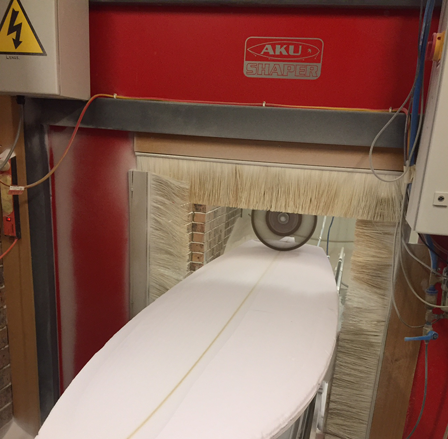
There are a variety of shaping machines available to the surfboard manufacturers of the world and the one our boards are shaped on is the AKU High Precision Surfboard Shaping Machine. The accuracy and technology is top of the range which, combined with the highly advanced AKU Surfboard Design software, gives us the competitive edge to develop our range of boards to their full potential and beyond. We are able to create new designs and make small yet important changes to the boards design to suit the needs of all our customers. The process is fast and effective and gets the blank into our hands quickly so we can start on your new board quicker.
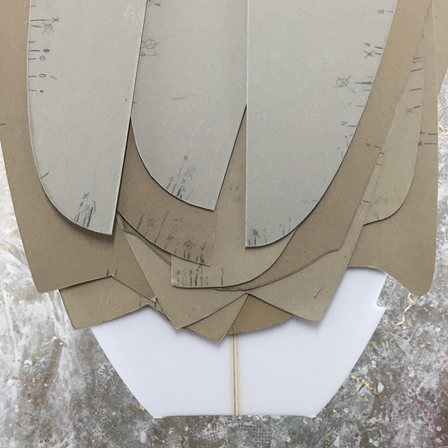
Even though a machine is used to cut the blank to the desired shape, the final sanding process is done by hand. Once removed from the machine, the fragile foam blank is passed to the shaping bay where the nose and tail are cut to the requested template. The deck, bottom concaves and rail profiles are then carefully sanded, without marking it in any way, until the final desired shape is achieved and it has that fantastic smooth feel of a fresh shaped blank ready for glassing.
We have also added another important step during this stage of the construction process. We tape the stringer and spray the blank white. Even the very best foam reacts to UV light and over a period of time will eventually discolour. If you would prefer to have your board sprayed a different colour, this can also be arranged.
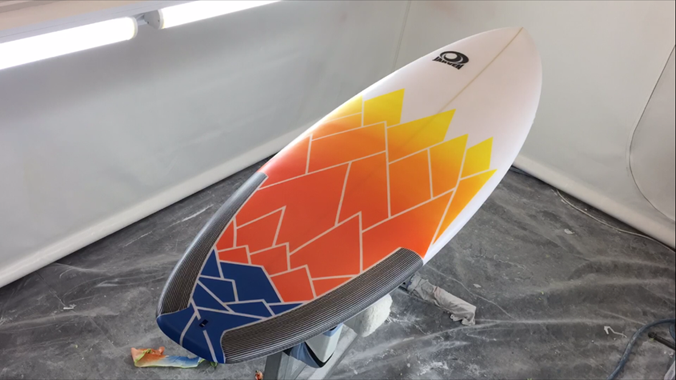
There are many different ways to customise the look of your new board and make it unique.
Sprays Designs
Surfboard sprays allow you to customise the look of your new board and can either be sprayed straight onto the Blank prior to fibreglassing or directly onto the fiberglass of a finished board. For complex designs where a lot of taping and pin lines are required spraying onto the finished board gives a quality finish.
Posca Pen Designs
The use of Posca Pens is drawn directly onto the finished board and a clear lacquer is sprayed over the Posca paint to seal it and prevent fading. This allows some customers to take a white board home, draw it up and bring it back to be sprayed with clear.
Printed Decals
The artwork for these designed are created using graphic software and can be as complex and colourful as you like. The finished design is printed onto a woven fabric, specific for the use on surfboards. Once trimmed to the correct shape of the surfboard it is laminated onto the blank and fibreglassed over with the usual fiberglass cloth and resin. The results can be spectacular!
Resin Art
The use of coloured pigments or dyes in the resin to create different coloured boards is not a new idea, but has started to make a resurgence of late, especially in the Retrostyle boards.
When used with the “Cut Laps” method of fibre glassing you end up with a darker coloured outline around the rails where the layers of fibreglass overlap.
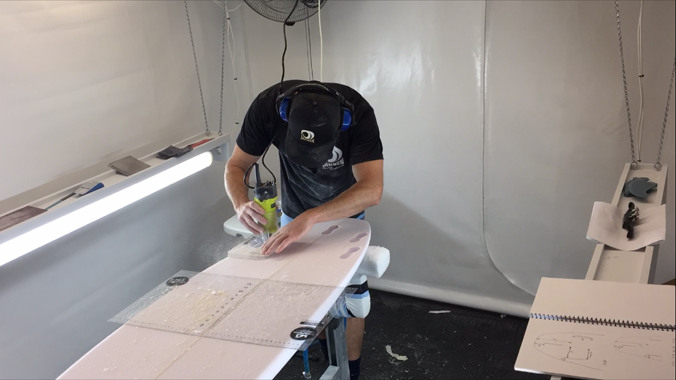
With the advancement of the new fin systems, the installation of the finboxes is done prior to glassing. We use both FCS II and FUTURES fin boxes which require us to router out the blank and set the fins in place ready to be fibreglassed over. This is viewed as a stronger way of holding the finboxes in place as they are not only glued in with resin, but also have a layer of fibreglass around the edge to hold them on place.
The new FUTURES leash plug and single fin boxes we use are also installed in the same way using different routers and templates.
Setting up of the fins locations and offset angles is critical to the boards performance and there are a variety set ups available:
- Thruster (3 fins) is the most popular.
- Quad (4 fins) where smaller fins are installed behind the larger side fins.
- Twin (2 fins)
- Hybrid (5 fins) allows for all the above setups on the same board.
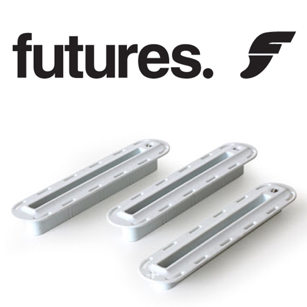
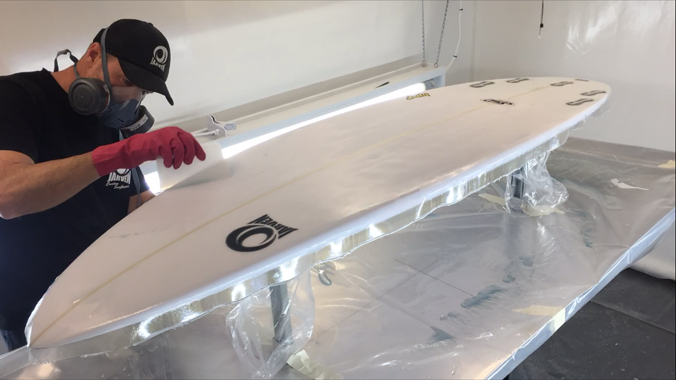
Fibreglassing the blank is the most critical part of the process to make or break a boards outcome. The fibreglass is laminated onto the blank using a crystal clear tacky "laminating" resin that will show up even the slightest mark, air bubble, bump or scratch. Once set, the Lam resin is still slightly tacky and cannot be sanded. There are several options for the weight of fibreglass used and they are listed below. Of course if you have a special requirement, we are more than happy to accommodate your needs through our custom orders.
Standard - 4oz + 4oz Deck x 4oz Bottom (most popular balance of strength vs weight)
Light - 4oz Deck x 4oz Bottom (Junior or competition boards)
Medium - 6oz + 4oz Deck x 4oz Bottom (for extra strength on the deck)
Strong - 6oz + 4oz Deck x 6oz Bottom (Extra strong but with extra weight)
Once the board is fibreglassed the next step is the filler coat or sometimes referred to as the hot coat. A specific “Filler” resin is used which has a wax component it that rises to the surface as it sets and allows it to be sanded. The hard edges around the tail area are taped and then using a wide paintbrush, the filler resin is painted on the fibreglass to seal and cover it.
During this stage the sharp edges start to take shape, all while using just the right amount of filler coat so as to keep the weight down and provide an excellent finish for the sander to work with. If not enough filler is used the sander cannot get the sharp edges or the final finish needed to produce a good looking, high performance light weight surfboard.
The final step in the process is sanding the board to desired shape and professional Protec wet rub finish that has sharp edges, no scratches and just the right thickness for strength, durability and weight. It requires an experienced and skilled sander to get it right, especially when channels, swallow tails and flyers are involved. The Protec wet rub finish provides a good looking, faster, high performance board and is by far our most popular finish.